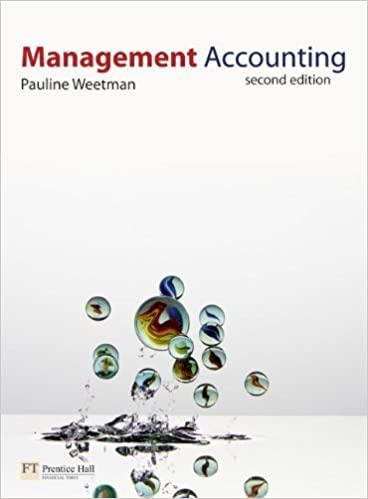Answered step by step
Verified Expert Solution
Question
1 Approved Answer
Create a Two Page Study Guide with this Information Chap. 1 Direct vs . indirect costs Manufacturing costs ( DM , DL and MOH )
Create a Two Page Study Guide with this Information
Chap.
Direct vs indirect costs
Manufacturing costs DM DL and MOH
Prime and conversion cost
Nonmanufacturing costs selling and administrative costs
Product vs period costs
Variable vs fixed costs vs mixed costs in total and per unit
Relevant vs irrelevant costs
Differential cost and revenue, sunk cost, opportunity cost
Contribution income statement
Chap.
Joborder costing system record and its components
Source documents: material requisition form, time sheetcard
Predetermined OH rate Budgeted OH Budgeted allocation base
Applied OH Predetermined OH rate x Actual allocation base
Plantwide vs Departmental OH rates
Chap.
The transactions in Taccount and journal entry form that capture the flow of costs in a joborder costing system
Cost flow from Raw Material to Work in Process to Finished Goods including disposal of OH variance
Schedule of COGM, COGS and income statement
Under or overapplied OH: comparison between actual and applied overhead
To dispose underoverapplied OH: write off to COGS
Disposal of overapplied underapplied OH will decrease increase COGS
Chap.
CVP analysis, CM unit CM CM ratio
CVP graph, sensitivity analysis the effect on net operating income of changes in variable costs, fixed costs, selling price, and sales volume
Target profit analysis and breakeven analysis
Margin of safety in units, in revenue, and as a
Operating leverage
change in profitsnet operating income degree of operating leverage x
change in sales
Multipleproduct breakeven
Sales mix in revenue
Chap: Activitybased Costing
Traditional costing with volume drivers: may overcost some products while undercost others
Activity hierarchy: unitlevel, batchlevel, productlevel, customerlevel and Organizationsustaining level
First stage allocation: Identify activity pools and allocation OH indirect cost to each pool
Second stage allocation: For each pool, identify activity measure driver allocation base, calculate activity pool rate, and allocate cost to product lines, customers and customer orders
Product line margin report
Customer profitabilitymargin report
Differences between ABC and traditional costing
Step by Step Solution
There are 3 Steps involved in it
Step: 1

Get Instant Access to Expert-Tailored Solutions
See step-by-step solutions with expert insights and AI powered tools for academic success
Step: 2

Step: 3

Ace Your Homework with AI
Get the answers you need in no time with our AI-driven, step-by-step assistance
Get Started


